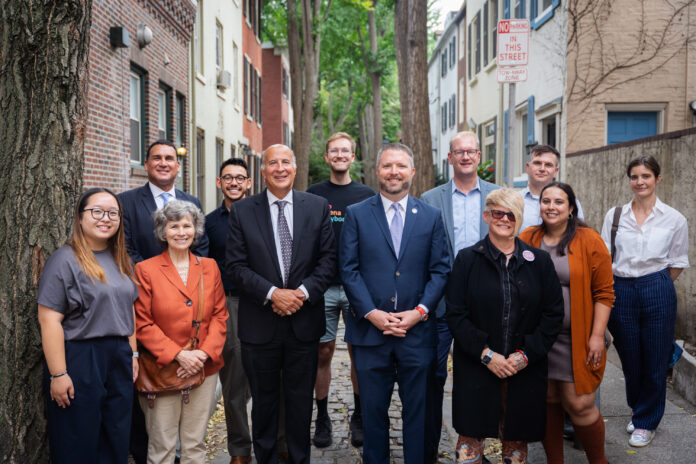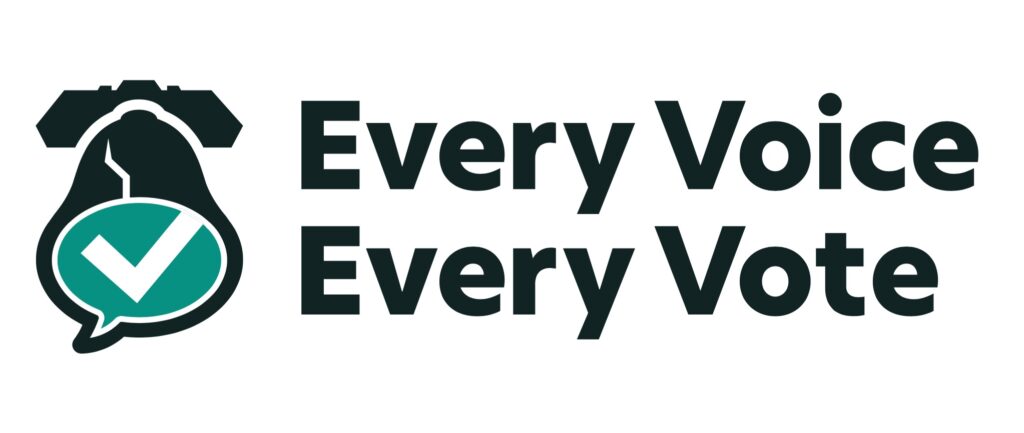
“Our neighborhood is more than a collection of streets and buildings. It’s a living testament to the history and heritage of Philadelphia,” said Tami Sortman, president of the Washington West Civic Association. “Preserving the character of Washington Square West means honoring the stories, architecture and spirit that have shaped this community for centuries.”
She’s celebrating the decision to establish the Washington Square West Historic District — an area that will include 1441 residences, religious spaces and commercial or business properties spanning 26 blocks in the neighborhood. The historic district will include streets traditionally considered to be part of Philly’s Gayborhood.
Sortman explained that Giovanni’s Room will now be preserved along with the William Way LGBT Community Center, homes of noteworthy LGBTQ+ activists and leaders, and some of the buildings that currently or previously housed LGBTQ+ bars and gathering places.
“We don’t want to lose our history,” said Sortman, explaining that neighbors have been pursuing this designation for almost fifteen years. “We want to keep the fabric of this neighborhood intact.”
Those who initially worked to nominate the district spent significant time and resources gathering important documents, taking necessary photos, and filing paperwork with the city’s historic commission — then they waited.
“There was actually a line of different areas in the city that were looking for historic designation as well,” explained Sortman, noting that at least five other neighborhoods were ahead of Wash West in the queue.
Eventually, that paperwork was voided because too much time had lapsed — but that group of neighbors resurfaced four years ago to ask the Washington West Civic Association for help.
“So we created a committee, and I was leading that committee at the time to educate the community about what it meant to be a historic district,” explained Sortman, adding that the association hosted a handful of events over two years to hear from the community and help residents understand how the designation would and wouldn’t impact daily life and decisions.
The series included a speaker series offered by the Preservation Alliance for Greater Philadelphia and the Philadelphia Historical Commission.
“We had zero opposition from the community every time we did one of these events,” Sortman said.
Various neighbors showed up to a recent meeting to oppose the nomination. Before it was approved, those for and against the idea shared their perspectives with the city’s Committee on Historic Designation.
In a report that highlights the decision to grant the designation, the committee cited LGBTQ+ history and noted that preservation movements have evolved to include a more “expansive view of history, culture and architecture, celebrating the lives and design of modest middle and lower-income residents alongside those of higher-style wealthier inhabitants.”
Pursuing the designation was no small feat. Those involved needed to take photos of “every property, every house, every building, every shed, every parking lot,” Sortman noted, explaining that each space was categorized with descriptions, important dates, and other information that conveyed significance.
“That was two years of work to compile all of that information,” she added.
Properties had to be at least 50 years old to be deemed historic. The majority of the neighborhood’s residences — some of which were built during the 1700s and 1800s — have already been identified as historic after homeowners pursued the designation on their own.
The neighborhood faces a constant threat of commercial and residential development. Some historically significant places have been demolished only to become vacant lots after developers abandon projects.
“That was a piece of history that is now gone,” Sortman said.
She noted that the history of the neighborhood has been paved over in the past — referencing literal cement that has replaced cobblestone in many of its historic alleys and side streets.
But even those quiet nooks will soon look more like they did in the past — thanks to a $1.4 million grant.
Five streets — including sections of Quince, Irving, Manning, Hutchinson and Bonaparte — will be rehabbed with new or updated granite renovations where needed. ADA ramps will also be installed.
“This project is a vital investment in Washington Square West, preserving the historic character of our streets while enhancing safety and accessibility for everyone,” said Rep. Ben Waxman at a press conference on Sept. 17. “With the World Cup and our nation’s semiquincentennial approaching, this project is the perfect way to show off the heart and history of our city to the world.”
Work has already begun on similar streets projects — including the reinstallation of Camac Street‘s wooden pavers.
“I’ve long thought that Philadelphia’s secret urban power is its narrow lanes and byways like Quince,” said Paul Steinke of the Preservation Alliance for Greater Philadelphia. “We need to preserve them and treat them with the respect they deserve.”
“The streets, buildings — that creates the look and feel of a neighborhood. When you destroy that, what do you have anymore?” Sortman asked.
“This grant is going to do all the necessary work to bring back the beauty to each of these little streets we have nestled into our neighborhood,” she said. “That’s what makes Wash West so different and unique.”
Sortman believes innovation and modernization should work hand-in-hand with the historic elements of a space — that people should find ways to respect the past while planning for the future.
The new historic designation’s boundary does not include the entire neighborhood — although it is the biggest stretch of continuous streets labeled as historic in the city. It’s an odd shape that roughly spans Walnut through Lombard Streets and 8th through Juniper Streets.
Sortman explained that there’s still land that can be used for modern projects outside that boundary, which has already seen recent development.
“A city is ever-growing, ever-moving — a breathing, living thing, so buildings are going to get built; things are going to change,” she said. “The look and feel of Washington Square West has changed drastically since I’ve lived here, and I’ve been there living for 25 years now.”
She welcomes that change as long as it also honors the legacy that’s come before it.
“I’m looking at future generations who will be able to enjoy the neighborhood just like I enjoy it now,” Sortman said. “This will now make sure that the next generations coming up have the opportunity to see it, or live in it, or be around it.”

